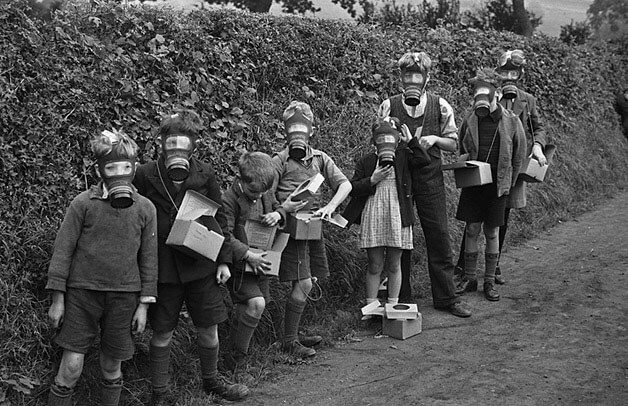Bowes Park Weekly News, 5th January 1940
The six Wood Green elementary schools were re-opened on Tuesday on the terms recently reported, and in spite of wintry weather, the attendance of children was very good.
Two sessions are held each day, and half the children attend at each session. Owing to the limited accommodation no more children can at present be taken, and at Bounds Green School, to which Mr H J Garlick has returned as headmaster, there is a waiting list. Wood Green being an evacuable area, has “light” air raid shelter, but Southgate, which is a neutral area, has “full” protection. The “light” variety consists of thick ceilings and walls, while the “full” protection is chiefly tunnels outside the school, but in the latter case the schools would be allowed to carry on work during the raid season, but Wood Green schools would be closed at once if raids occurred with damage in the locality.
Now that the schools have been reopened, after so much careful preparation, it is hoped that there will be no more closures, but that the schools will be able to gradually work back to the pre-war routine.
At Wood Green the policy is still to continue evacuation, although it is admitted that the tendency is for children to return, owing to billeting difficulties. These returns are discouraged by the Wood Green Committee, and where the billet is unsatisfactory it is preferred to make a change.
Wood Green schools are all either new or re-built and the town has now the best average schools in the County, and the evacuees, who are not as a rule in modern schools, are glad to plan to come back.
At White Hart Lane, for instance, which was in use for only one week when the war came, the children are very keen on “going to school,” for the building, although partly in use by the A.R.P. has special attractions.
Rhodes Avenue School is also in a class by itself, and was the forerunner of the new type of school, which gives daylight to every class-room. Bounds Green, Lordship Lane and Noel Park Schools have all been re-built, and though all are partly occupied as A.R.P, depots this is not regarded as a permanent partition!
It stands to reason that the rural area cannot compete with these large and modern schools with their spacious surroundings, and although the country has its own charm, at any rate, in the summer, there is always among the children a desire to come back to Wood Green, and it is no secret that teachers who are recalled for home duty count themselves as fortunate.

Website editor’s note
(October 2020)
At the outbreak of World War Two (Britain declared war on Germany on 3rd September 1939) the Government Evacuation Scheme was established to oversee the process of moving children and vulnerable adults from cities to rural locations that were considered safer. The Scheme divided the country into zones – evacuation areas, reception areas and neutral areas.
Evacuation was voluntary and the fear of the bombing drove many families to participate in the process. It was also significant that many schools in cities were closing and the whole process of placement and transportation was organised by the Scheme. The Government paid the cost of the children’s transportation and their board and lodging to the families who received evacuees in their homes.
Hornsey and Wood Green were designated evacuation areas, that is, densely populated areas from which children should be removed and placed in reception areas. There were several waves of evacuation. The first was in September 1939 but when the anticipated bombing hadn’t happened by the end of that year, parents began to bring their children home even though this was against government advice.
Image credits
Evacuees in Montgomeryshire – Wikimedia Commons/Geoff Charles/The National Library of Wales